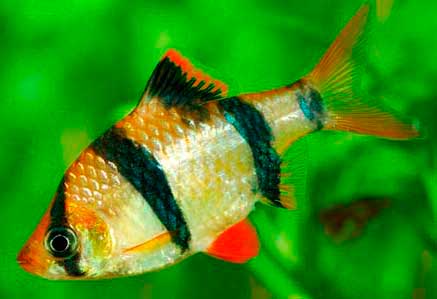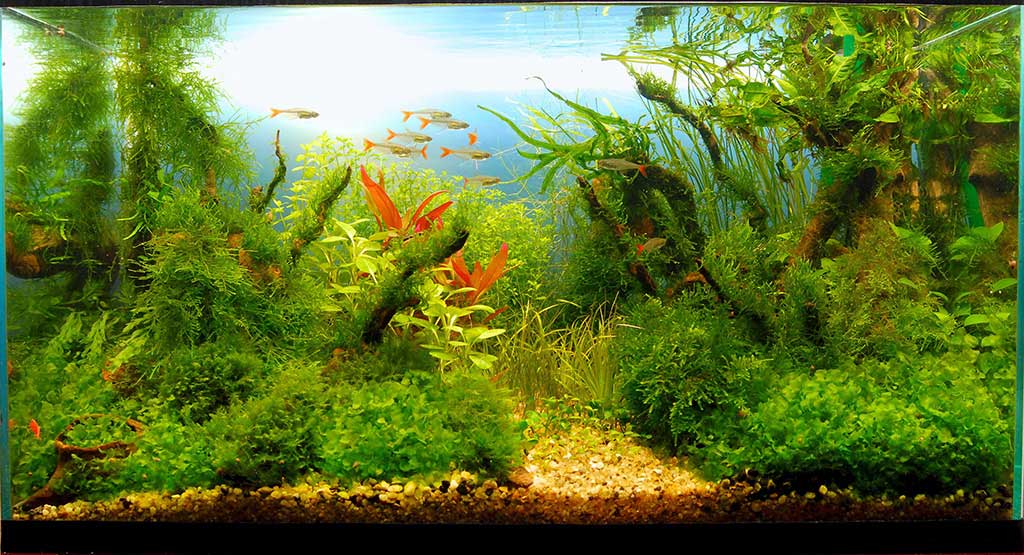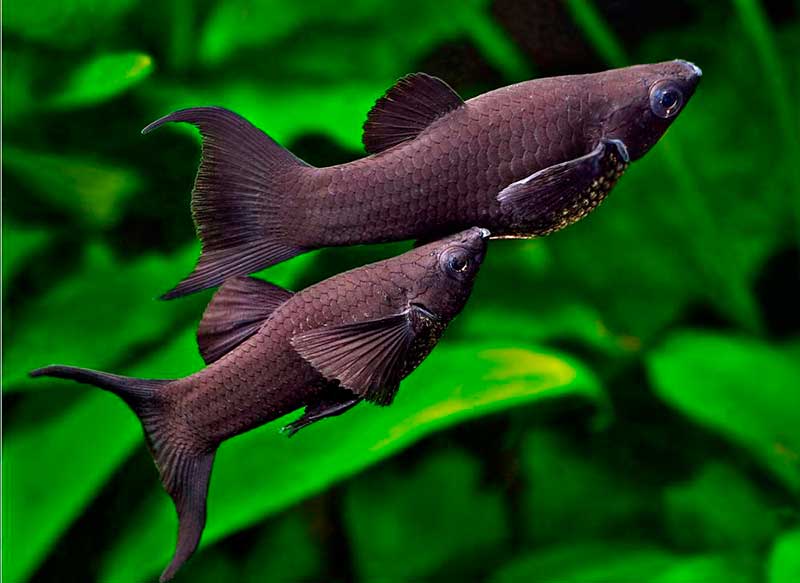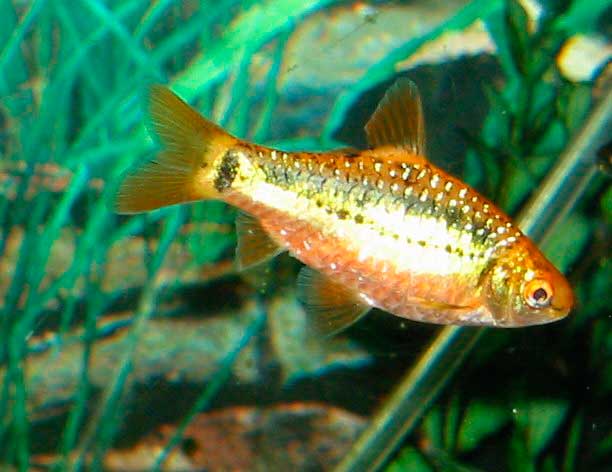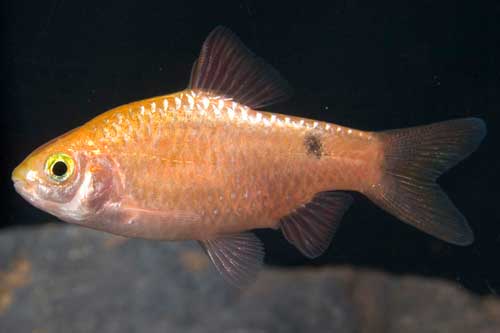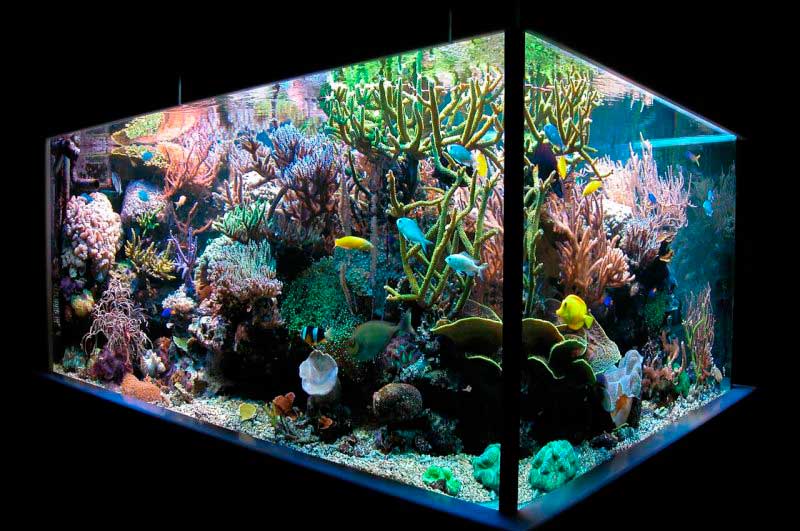Barbus Sumatran keeping which in the aquarium has a long history can bring a lot of joy and modern aquarists.
The Sumatran barb (Latin: Barbus tetrazona), is a representative of the carp family of fish. This species is one of the most popular and widespread barbs. It is very popular with fans of indoor aquariums.
Natural habitat.
The natural habitat of the Sumatran barb is the water massifs of Southeast Asia and Indonesia. It was artificially transported to European countries in the middle of 1935. In Russia it appeared in the area of 1946. The habitat is distributed within Kalimantan, Thailand, Indonesia, Malaysia and Sumatra.
The size and shape of a fish’s body.
This is the largest representative of the genus. According to confirmed data, the longest individual reached seven centimeters. There are reports that there were larger specimens. Behind the glass of the aquarium, these barbs are rarely more than 4-5 centimeters. It should be noted that female individuals are always larger than males, this is one of the distinctive signs of sexual dimorphism, which in this species is expressed relatively weakly.
Fish have a flattened body shape, having the form of a horizontally elongated rhombus. There are no whiskers.
Paint.
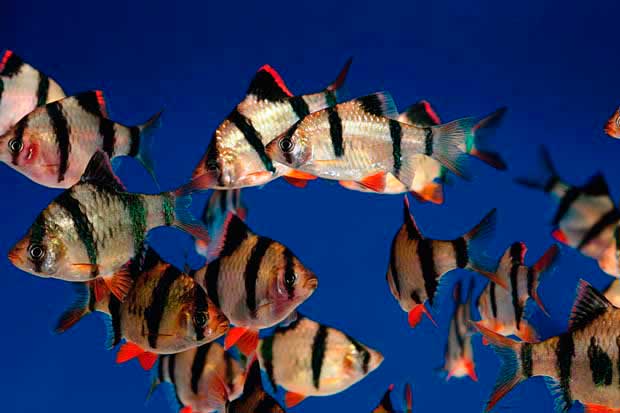
The coloration of the fish is represented by darker colors on the back, gradually lightening towards the abdomen. And has a palette of golden to pink shades. One of the main differences between these barbs is the presence of four stripes, located on the sides and going vertically from top to bottom. The first line crosses the eye, the second is next to the pectoral fins, the third is just behind the dorsal fin, and the fourth in front of the tail fin. All paired fins of representatives of this species have a red or dark pink palette of colors, the dorsal fin is always black with a red border. Marked more saturated colors in male representatives of the species. Aquarium fish, thanks to selection work, have a more saturated range of colors, in contrast to fish grown in the wild.
Barbus Sumatran keeping
Sumatran barbs lead a gregarious lifestyle, always peaceful and very mobile. It is their constant activity has greatly popularized the species among aquarists. Usually, the life expectancy of fish in aquarium conditions, with proper care, is from three to four years.
Fish gather in small flocks and, as a rule, most of the time stay in the middle layers of water or closer to the bottom. They prefer a densely planted aquarium, but with openings for open, free swimming.
You can use an aquarium that is not very large. Tanks with a capacity of more than 60 liters are best suited. To preserve the brightness of the coloration of the fish, it is better to use a ground of dark tones, since on light versions they pale, trying to merge with the surrounding conditions.
Sumatran Barbus compatibility
For a peaceful relationship barbs with neighbors of other species is desirable to meet a number of conditions. The aquarium should contain from 6 to 12 representatives of the species. The rest of the fish should be represented by peaceful, but able to protect themselves individuals. It is important to know if the number of barbs of the same species in the flock will be less than 4-5 individuals, they will be extremely aggressive toward each other.
It may happen that one of the fish will break away from the pack and will be alone for a long time, without activity. In this case, do not worry, it is a common behavioral reaction in barbs.
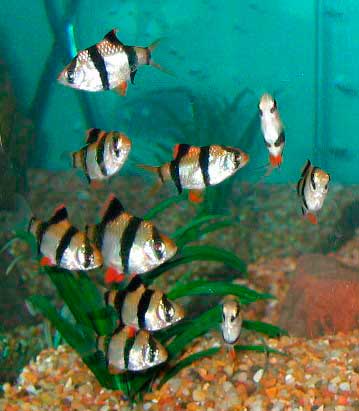
Sumatran barbs are not predators. However, when given the chance, they will immediately eat the newly emerged fry of any fish. A flock of barbs will hunt for young fish until they catch all of them. Do not sit with them in the same aquarium slow fish and individuals with long voile tails and fins or long whiskers. Barbs will constantly bite them for the tips of the veil, bringing constant discomfort and stress. This is especially true of all varietals of goldfish. They are usually peaceful, slow and often have luxurious veil fins. Also the heroes of our narration like to pull the whiskers of gourami of all kinds.
It should be noted that even if all conditions are met, the males like to compete with each other. Fortunately, these clashes are over quickly enough and do not cause any damage or injuries to the fish.
Barbus Sumatran keeping
Fish do not need any exotic conditions. Suitable only for them, and feel great in the classic environment suitable for most warm-water species. It is only necessary not to forget about the constant filtration, oxygen supply and change part of the water in the aquarium. The best water temperature is 21-23 degrees Celsius. Acidity should be within the range of 6.5 to 7.5.
In nutrition, Sumatran barbs are absolutely not fastidious and will eat both animal and plant food with equal appetite. But, it is necessary to know that these fish can eat in excessive amounts, which often leads to their death.
Breeding Sumatran barbs.
These fish become capable of reproduction when they reach the age of six months. Spawning can occur at any time. Before the breeding period, it is necessary to keep female and male individuals separately from each other for 20-30 days, at a temperature of 22-24 degrees.
Fish spawn both in pairs and gregariously, in a separate aquarium, the size of more than 10 liters. Soil on the bottom does not need to be placed. Instead, it is necessary to lay a network with a fine mesh, for lack of access of mature individuals to the eggs, as they will eat it with appetite. Snails in such an aquarium should be absent for the same reason. Water temperature should be about 26-28 degrees, it is in these conditions spawning barbs are more active.
In the process of postponing play, the fish should not be fed.
After transferring the adults back to the general aquarium, to the water with eggs should be added a little methylene blue, to destroy possible fungus on the surface of its shell.
After 3-4 days, the cubs appear and immediately start actively swimming and searching for food. Feed them with any smallest available food. After a month, the fry will begin to acquire a beautiful color of adults and, after its full formation, fry Sumatran barbs can be planted in a common aquarium.
Also read the article Sumatran Barbus.
